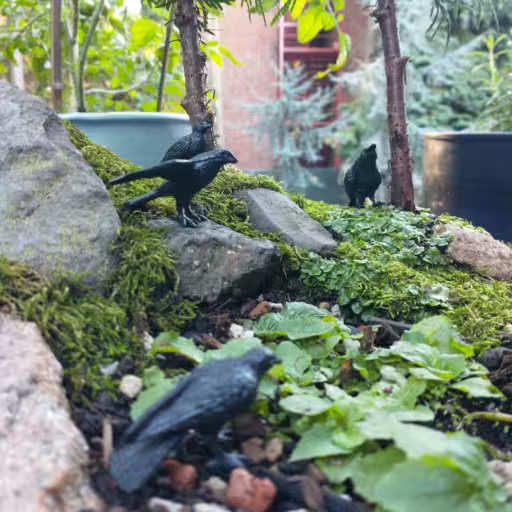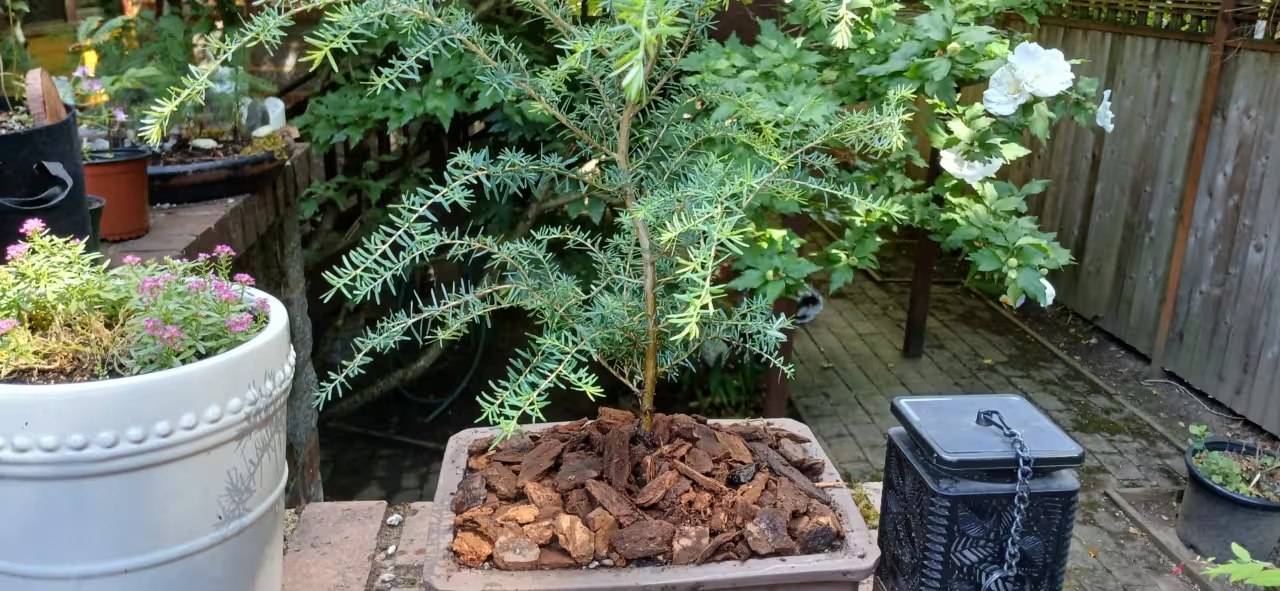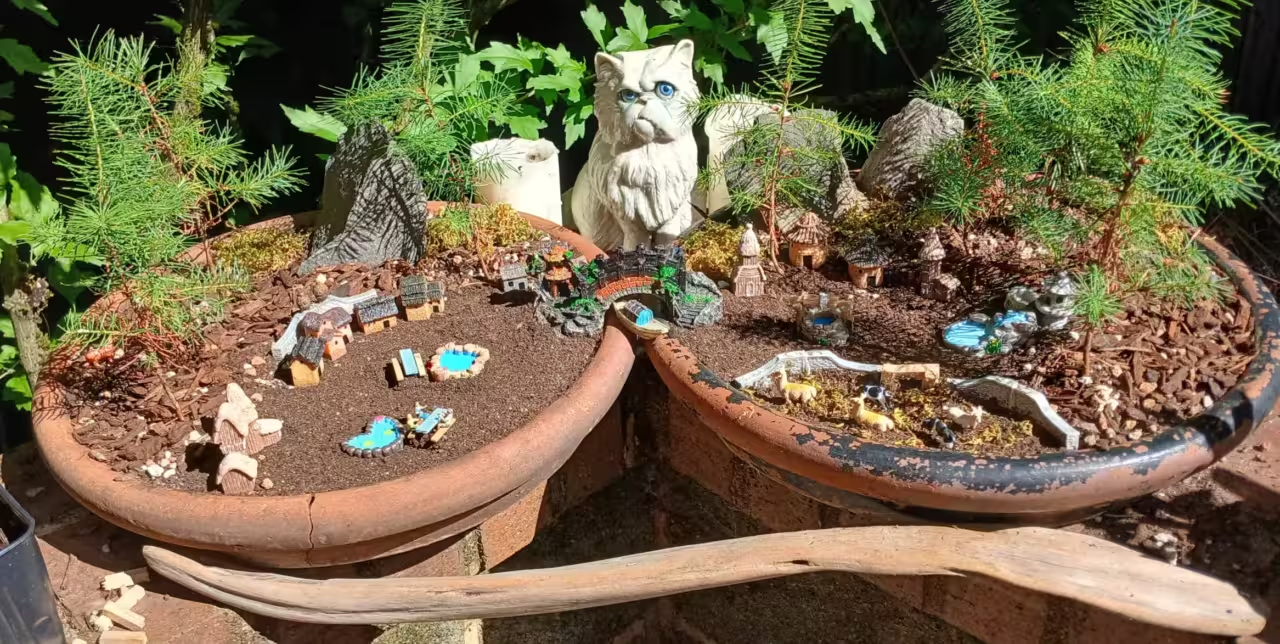I seem to be getting more into the traditional style of bonsai now. While I love the look of penjing, especially that of my new dual-planter Douglas Fir penjing, I’m also getting into the smaller pot and single tree style of bonsai. I also want to try and make my focus on the native trees of the Pacific Northwest, both for the regional identity and a way to set myself apart from the typical style of bonsai I’ve seen.
I decided to go with this Western Hemlock for a couple of reasons: it met my budget of $15 and it looks unique. The bend that occurs in the middle of the tree really makes this one stand out to me. The pot was given to me by a dear loved one, Katie, whose support I’ve come to rely on. She has encouraged me greatly in learning this amazing art. Thank you, Katie!
Western Hemlock, or Tsuga heterophylla, grows from southern Alaska down the western coast of the US, through the Cascade gorges of Oregon, and to the northern California coast. It is classified as a climax species, meaning that left alone the Western Hemlock would dominate the forests of the Pacific Northwest. Interestingly, the Western Hemlock is the state tree of Washington! They can grow over 200 feet tall, live over a thousand years, and tolerate both shade and sun quite well.
I have not yet begun any training or pruning on this tree. I want to make sure it will survive the coming winter before I put any additional burden on it. I’m already in love with this one!


